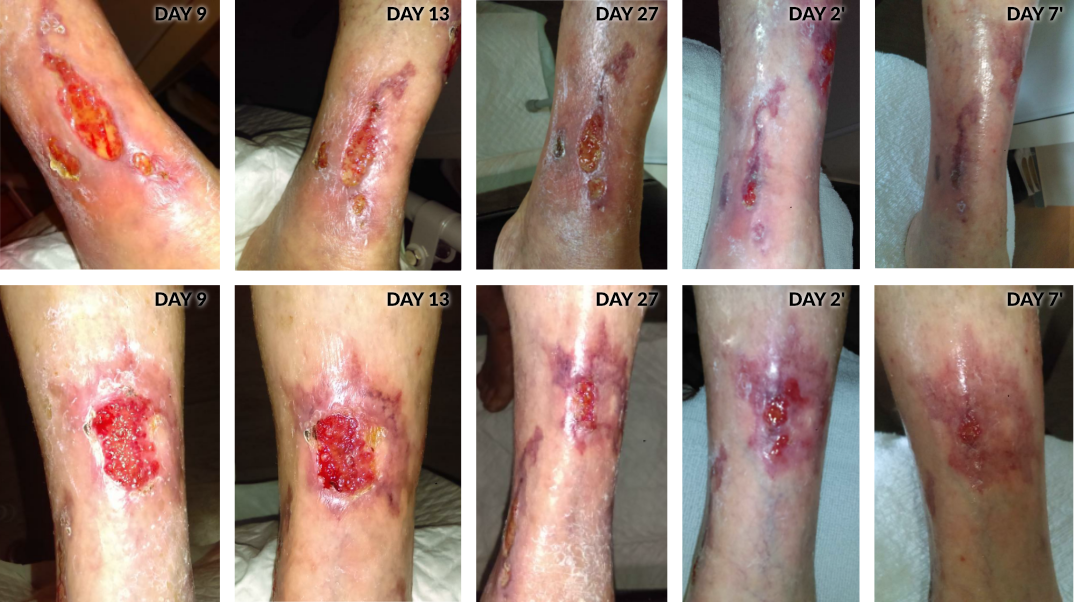ULCERATIVE LESIONS
Several ulcers on the leg of the same patient were treated with Bioptron. On day 9 after the start of treatment there was a clear improvement of the ulcer borders, with the presence of healthy scar tissue. The improvement was constant until the patient decided to stop it (Day 21). From that moment, ulcers did not get worse over time, but they did not improve either. Bioptron Light Therapy was re-started 21 days later. Two days after this new start (Day 2’), the ulcers showed an evident and huge improvement. On day 8 after the new start of Bioptron treatment (Day 8’), the ulcers were almost closed and the patient did not have pain anymore.

30 patients suffering from cutaneous and mucosal ulcerative lesions were treated with Bioptron Hyperlight Therapy. The pain decreased within the 1st month in 70% of the patients and in 100% of the patients within 3 months. The infections regressed or disappeared in 100% of the cases after the 1st month of Bioptron treatment. From a histological point of view, the presence of fibrin, clear neovascularization, granulation tissue and the reduction of ulcer borders were observed. After this study, the authors decided to change their protocol for ulcer treatment, in which Bioptron light was applied to the lesion during all the phases of dressing. The protocol was called “On the Wound”.
Source: Aragona et al., 2017 & Korian Retirement Home, France, 2018